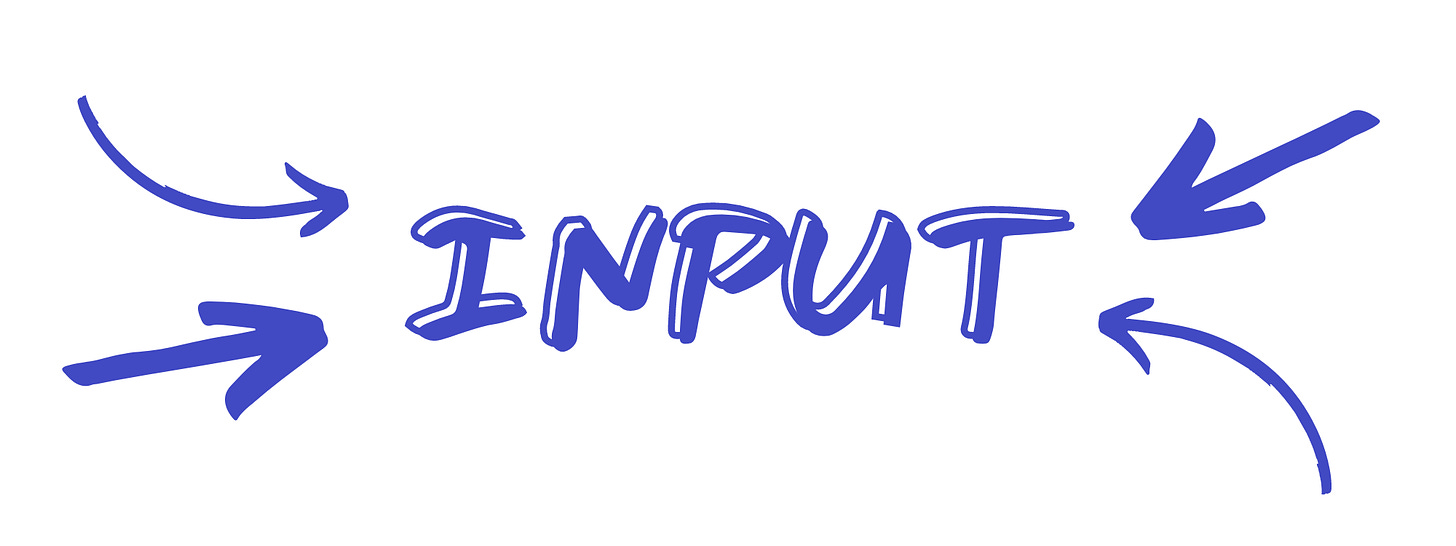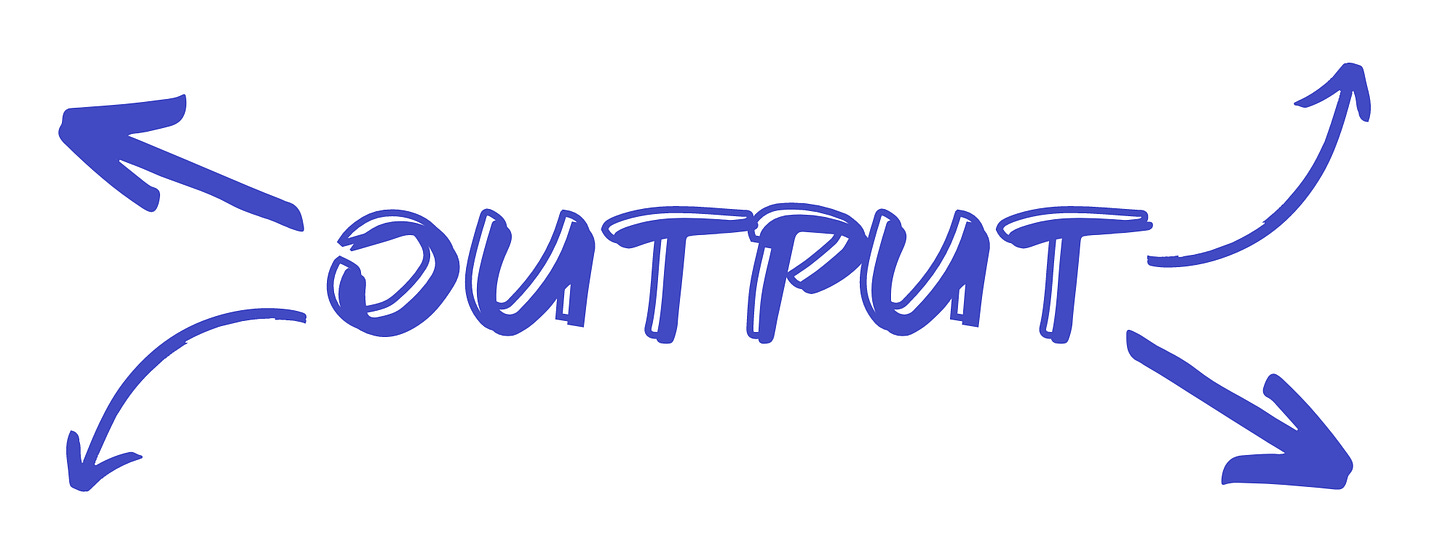Honeycomb Club #3: Taking artistic inspiration from spring’s unruly splendor
On embracing the regenerative, messy, green-exploding nature of spring.
Hello sweet friend,
I’ll keep it short and sweet today.
I’m headed on a road trip with a friend into the wilderness for the rest of the week, so there won’t be an essay this time around. Instead, enjoy input and output largely inspired by the season we’re currently immersed in, and my personal favorite: spring.
It’s a season of messy, exuberant growth, where nature paints in bold strokes of green and flowers burst forth in riotous color.
I hope these pieces of inspiration remind you of the wild, untamed spirit of spring and inspire you to embrace its vibrant, green-exploding nature. May we revel in the chaos of new beginnings and the promise of what is to come.
1. “Instructions on Not Giving Up” by Ada Limón
Poem
My friend recently hosted a spring tea party and placed a themed poem under everyone’s teacup as a little gift. This was the poem I received, and it’s been taped above my desk since. Each time I read it, it inspires a sense of budding hope, a calm with an underlying thrum of excitement for the season that’s exploding around us now.
“More than the fuchsia funnels breaking out
of the crabapple tree, more than the neighbor's
almost obscene display of cherry limbs shoving
their cotton candy-colored blossoms to the slate
sky of Spring rains, it’s the greening of the trees
that really gets to me. When all the shock of white
and taffy, the world’s baubles and trinkets, leave
the pavement strewn with the confetti of the aftermath,
the leaves come. Patient, plodding, a green skin
growing over whatever winter did to us, a return
to the strange idea of continuous living despite
the mess of us, the hurt, the empty. Fine then,
I’ll take it, the tree seems to say, a new slick leaf
unfurling like a fist to an open palm, I’ll take it all. Green-singing
birds explore from all the rocks.”
2. The Writing Life by Annie Dillard
Book
Annie Dillard is the author of one of my all-time favorite books, Pilgrim at Tinker Creek, and so I naturally turn to her book on writing (aptly named The Writing Life) for inspiration. This passage in particular spurs me on when I feel foggy, demotivated, or lost. Her words remind me of the profound power of writing to shape our understanding of ourselves and the world around us.
“Who will teach me to write? A reader wanted to know.
The page, the page, that eternal blankness, the blankness of eternity which you cover slowly, affirming time’s scrawl as a right and your daring as necessity; the page, which you cover woodenly, ruining it, but asserting your freedom and power to act, acknowledging that you ruin everything you touch but touching it nevertheless, because acting is better than being here in mere opacity; the page, which you cover slowly with the crabbed thread of your gut; the page in the purity of its possibilities; the page of your death, against which you put such flawed excellences as you can muster with all your life’s strength: that page will teach you to write.”
3. How First Contact With Whale Civilization Could Unfold by Ross Andersen
Article
Scientists are currently working on a $33 million project to record sperm whales communicating with one another and build neural networks to decipher their meaning. While the project’s aim is tenuous, it’s possible that humans will be able to converse with sperm whales in the near future. The question is: what should we say to them, if anything?
This article deep dives into the splashy unknowns about the great responsibility that comes with cross-species communication. The author speaks to a host of whale researchers to parse both the mechanics and ethics of first contact with a species we have co-inhabited the earth with for millenia. It’s a fascinating read filled with adventure, awe, and unsolved philosophical questions that’ll keep you thinking for the rest of the day. Read it here»
1. A simple journaling exercise to home in your powers and your desires
I first encountered this set of journal prompts from Luna Dietrich, the Pussy Witch, who was given them by a spiritual guide of their own.
When I’m feeling out of touch with my power or my deep desires, I add these three prompts to my morning pages practice:
1-3 things I’m grateful for
1-3 things I’m proud of
1-3 things I desire
Try it for yourself: Write down a few concrete things you’re grateful for, proud of, and desire, and aim to be specific and timely.
For example, instead of saying you’re grateful for your family, friends, and job, you could write that you’re grateful for talking to your mom on the phone each week, for the funny memes your best friend sends you, and for the fulfillment you’ve gotten out of your work over the last week.
2. Take a mindful walk
There are two simple rules for taking a mindful walk: no distractions, and no judgment.
You’re going to walk as slowly as you can, and raw dog it the whole way. No music, no podcasts—in fact, leave your phone at home, or at the very least put it on airplane mode. If you must, bring a pen and scrap of paper for any ideas, insights, or thoughts that strike you on your walk.
Give it a go: you’re simply going to walk as slowly as you can, while staying wide open to the environment around you. Notice all that you can. Embody a sponge, absorbing all the sights, sounds, smells, and sensations of your surroundings.
When you find your attention flagging, gently bring yourself back to the present. If you’re routinely getting wrapped up in your thoughts or distractions, take a break by stopping your walk. Start up again when you’re ready to pay deep attention.
Walking meditation is a great gauge for how much presence and attention you can muster any given day. If you find yourself needing to stop to recollect yourself and return to presence, try to do so with a light touch. There’s no need to beat yourself up or judge yourself harshly. Simply notice the truth of your distraction and pull yourself back into the present experience. Just notice what’s possible today, and try again tomorrow.
3. Build yourself a book apothecary for the season
This wonderful idea comes from
care of ’s podcast Windowsill Chats. Stephanie explains what a book apothecary is and how to build one yourself:“It’s basically a set of books that is perfect for you in this moment, in this season of life. So I’ll ask people, you know…
Who do you want to be?
How do you want to feel?
What do you want to do?
…And then based on their answers, you pick books that will help you be, feel, and do those things. So [perhaps] fiction books and memoirs for how you want to be, to help you embrace a new identity. You’ve got things like essay collections and poetry for how you want to feel, and then maybe more of your typical nonfiction books for things that you want to do. And you read those books with an open mind and an open heart so that you can pull the messages from them. What quotes are jumping out at you and why? Why is that resonating with you in this moment? Could you write about it? Could you journal about it?
And then the step after that, after you’re reading, is to pay attention to those little nudges and those things that you’re feeling, and take some sort of micro-action when you’re done.
There was a book that I read recently…The Magic of Lemon Drop Pie… After finishing reading that book, I made my very first homemade gluten free lemon meringue pie and had a blast doing it and enjoyed it with family… And that’s the kind of thing that I just do over and over again. It just makes life bigger, because I would never have done that before… So I just let myself be inspired by the book and bring it to my life in some way that just feels good and fun and better.”
Try it this week: spend some time answering Stephanie’s three insightful questions, and then head to the library, the bookstore, your own shelves, or your friends’ shelves, and put together a book apothecary for this season of your life.
That’s all for this week, my friend. Have fun out there!
With love,
Katie






